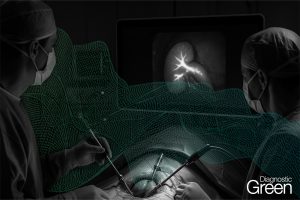The aim of this study was to determine the rate of indocyanine green (ICG) staining of bone and soft-tissue tumours, as well as the stability and accuracy of ICG fluorescence imaging in detecting tumour residuals during surgery for bone and soft-tissue tumours. ICG fluorescence imaging was performed during surgery in 34 patients with bone and soft-tissue tumours.
ICG was administered intravenously at a dose of 2 mg/kg over a period of 60 minutes on the day prior to surgery. The tumour stain rate and signal-to-background ratio of each tumour were post hoc analyzed. After tumour resection, the tumour bed was scanned to locate sites with fluorescence residuals, which were subsequently inspected and biopsied. The overall tumour stain rate was 88% (30/34 patients), and specific stain rates included 90% for osteosarcomas and 92% for giant cell tumours. For malignant tumours, the overall stain rate was 94%, while it was 82% for benign tumours.
The ICG tumour stain was not influenced by different pathologies, such as malignant versus benign pathology, the reception (or lack thereof) of neoadjuvant chemotherapies, the length of time between drug administration and surgery, the number of doses of denosumab for patients with giant cell tumours, or the tumour response to neoadjuvant chemotherapy. The overall accuracy rate of successfully predicting tumour residuals using fluorescence was 49% (23/47 pieces of tissue). The accuracy rate after en bloc resection was significantly lower than that after piecemeal resection (16% vs 71%; p < 0.001). A high percentage of bone and soft-tissue tumours can be stained by ICG and the tumour staining with ICG was stable.
This approach can be used in both benign and malignant tumours, regardless of whether neoadjuvant chemotherapy is adopted. The technique is also useful to detect tumour residuals in the wound, especially in patients undergoing piecemeal resection.




